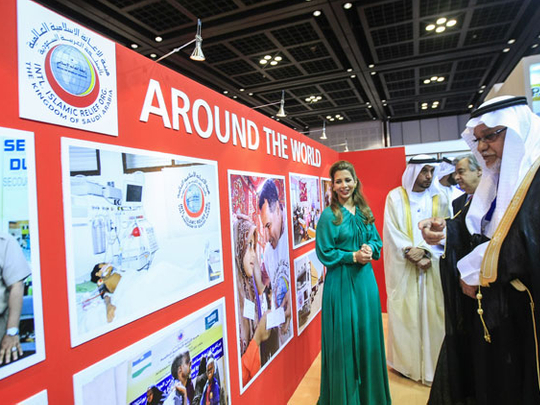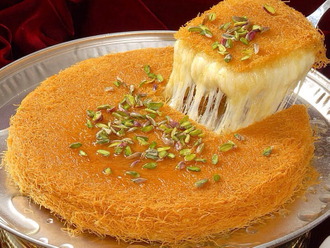
Dubai: The tenth edition of the Dubai International Humanitarian Aid and Development Conference and Exhibition (DIHAD) 2013 opened on Monday with emphasis on the importance of partnerships.
With the theme “Building Effective and Sustainable Partnerships in Humanitarian Assistance and Development Activities”, all speeches on the first day stressed the importance of building partnerships between various organisations and entities
DIHAD was opened in the presence of Princess Haya Bint Al Hussain, Wife of His Highness Shaikh Mohammad Bin Rashid Al Maktoum, Vice-President and Prime Minister of the UAE and Ruler of Dubai , UN Messenger of Peace and Chairperson of Dubai International Humanitarian City Board, and Antonio Guterres, UN High Commissioner for Refugees.
In her opening remarks, Princess Haya said, “Despite this rising tide of humanitarian crises, the news has not been all bad. Despite the financial crisis of 2008, donor funding has continued to set new records — and the sources of aid are shifting.”
She explained that donations from traditional Western donors seem to “contract” and donors in the Gulf Region and the BRIC countries (Brazil, Russia, India, China and South Africa) are stepping in and expanding their roles.
“Few people realise just how much aid has changed in the last decade. In 2010, the Chinese development bank actually lent more than the World Bank. Last month, GCC members announced over $1.5 billion (Dh5.50 billion) in assistance for Syrian refugees.” Princess Haya said.
This diversity of donors, she said, raises the issue of international collaboration and how they function as team members and partners, which she noted was the question DIHAD seeks to address.
“The most important lesson from our experience over the past ten years is we are all in this together, and working together is the most effective way to help each other.” She added that it is also important to listen to aid recipients.
Princess Haya said that sitting down and seeking common approaches and policies in the field and regularly sharing technical knowledge are a good start and sharing credit is also very important as many NGOs rely on visibility to raise funds.
“There is no shame in receiving aid and no moral superiority in providing it. The giving and receiving transaction is no indication of strength or weakness. It is an affirmation of our common humanity. Even the wealthiest nations have times of need,” she said, explaining the need for a more comprehensive global tracking system that reports all government and private aid and shows where it is going and how it is used.
DIHAD 2013 will host presentations on business practice with some of the leading and active humanitarian aid agencies. These sessions are designed to provide existing and potential new suppliers with a better understanding of the work of the respective organisation, its requirements, procurement methods and logistics procedures.
Guterres emphasised the importance of collaboration between entities to achieve major humanitarian and development goals. “These tasks go far beyond what any single agency or government can do. They require us to join together the diverse expertise, resources and networks of a wide variety of partners. This is particularly true in today’s global context, which presents ever-growing challenges for humanitarian and development efforts.”
He said that the there are a few important partnerships that need to be fostered, namely, partnerships with governments, partnerships with NGOs and the Red Cross/Red Crescent Movement; the growing partnerships with the private sector and partnership within the UN system.
DIHAD is hosting 275 companies from 66 countries and over 50 speakers. The conference and exhibition ends on March 27.







